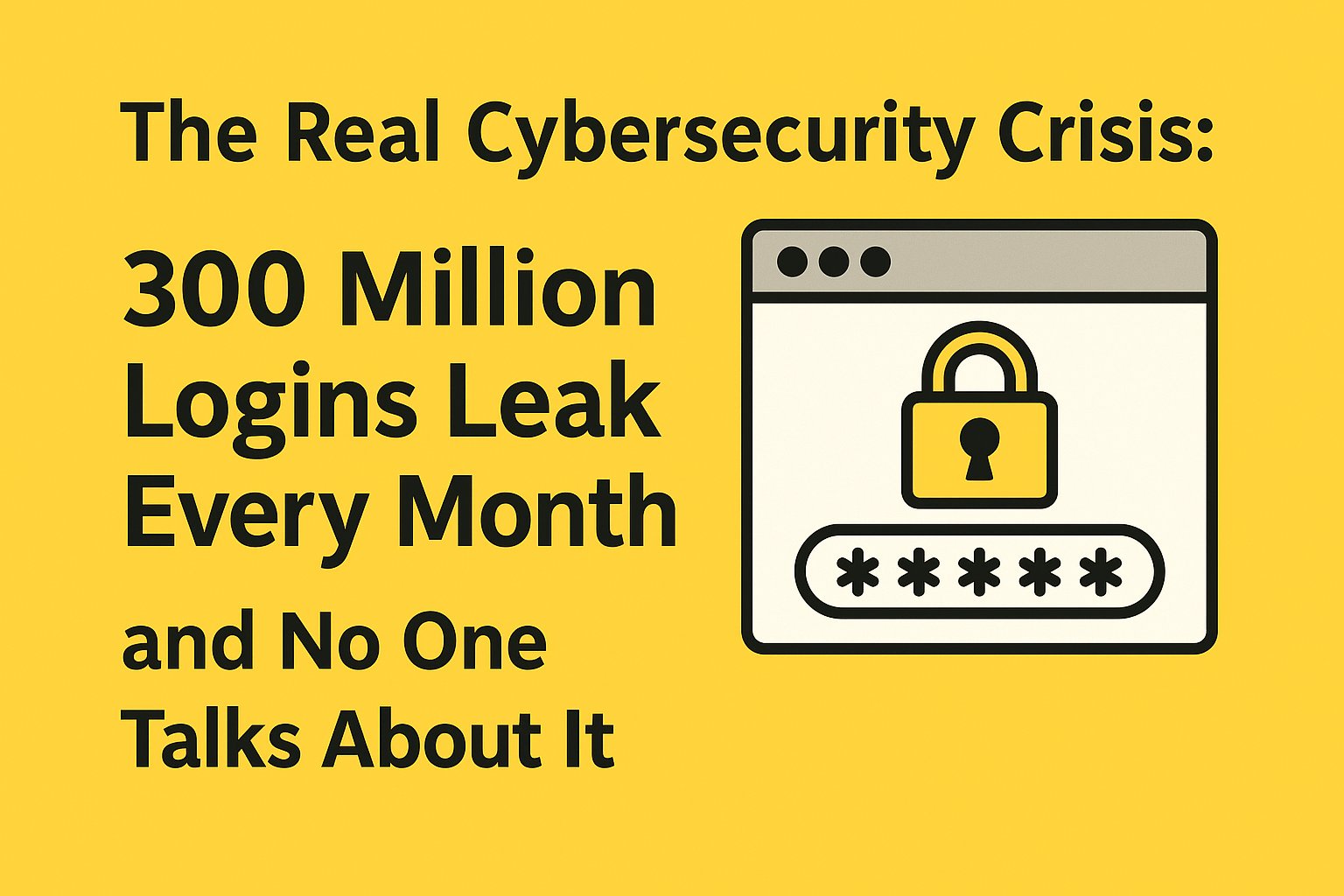The Real Cybersecurity Crisis: 300 Million Logins Leak Every Month

➤Summary
This week, news outlets around the world erupted in panic over the discovery of a database containing 184 million stolen login credentials. CNN, Fox News, The Guardian — everyone ran headlines warning users to change their passwords immediately.
But here’s the uncomfortable truth:
184 million credentials is a drop in the ocean.
At Darknetsearch, where we monitor stealer logs daily, we see far more than that — routinely.
What We See Every Day
Across darknet forums and Telegram channels, at least 10 GB of fresh stealer logs are published every single day. These logs are often given away for free and contain:
-
Logins in the form:
url:username:password -
Browser-stored credentials
-
Session cookies
-
Email account access
-
Screenshots, autofill, and crypto wallet info
With an average of 1 KB per login line, the math is clear:
📊 10 GB/day × 30 days = 300 GB/month
📄 That’s 300 million credentials leaking every month
Not as a one-off. Not in a “huge breach”.
Every. Single. Month.
Why 300 Million Logins per Month Is Realistic
It might sound unbelievable — after all, Earth has only ~8 billion people. So how can hundreds of millions of credentials leak every month?
Because:
-
🔁 Most users have 10–50 logins (personal + work)
-
🖥️ Each stealer log dumps hundreds of entries per infected machine
-
📤 Logs are re-shared and repackaged, appearing multiple times
-
🧑💻 One person = multiple infected devices
-
💼 Work and enterprise credentials often get mixed in
So it’s not 300 million people.
It’s 300 million access points — credentials for logins across Google, Microsoft, banks, schools, hospitals, email services, crypto platforms, internal business tools, and more.
What the Media Missed
The viral 184M database story spread because:
-
It name-dropped Google, Apple, Facebook
-
It had a big, scary number
-
It left the source and context vague
-
Journalists needed a cybersecurity story that day
But they ignored the broader context:
This happens every day. At scale. And no one talks about it.
We’ve seen credentials for:
-
🏛️ Government portals
-
🏥 Health services like NHS
-
🏦 Banks including Santander, JPMorgan, UBS
-
🧑💼 Work apps like Slack, Salesforce, AWS
-
👾 Gaming platforms and app stores
Why? Because stealer infections don’t care who you are.
They quietly harvest data from infected home PCs, work laptops, cracked software, remote desktops, and browser autofills.
Should Everyone Just Keep Changing Passwords?
If 300 million logins are leaked monthly, what good is changing your password after your data is already sold or shared?
That’s the wrong response.
What we need is:
-
Proactive monitoring (not reactive password changes)
-
Real-time detection of leaks (not panicked articles 2 weeks later)
-
Awareness that these are live infections, not old dumps
-
Better controls over password reuse, session storage, and cookie security
Final Thought
Everyone is screaming about a single file with 184 million logins.
Meanwhile, the darknet silently leaks 300 million every month, and no one blinks.
Maybe it’s time the public stopped reacting to the news cycle — and started reacting to the real threat that’s unfolding daily, right under our noses.
Most companies only discover leaks once it's too late. Be one step ahead.
Ask for a demo NOW →
